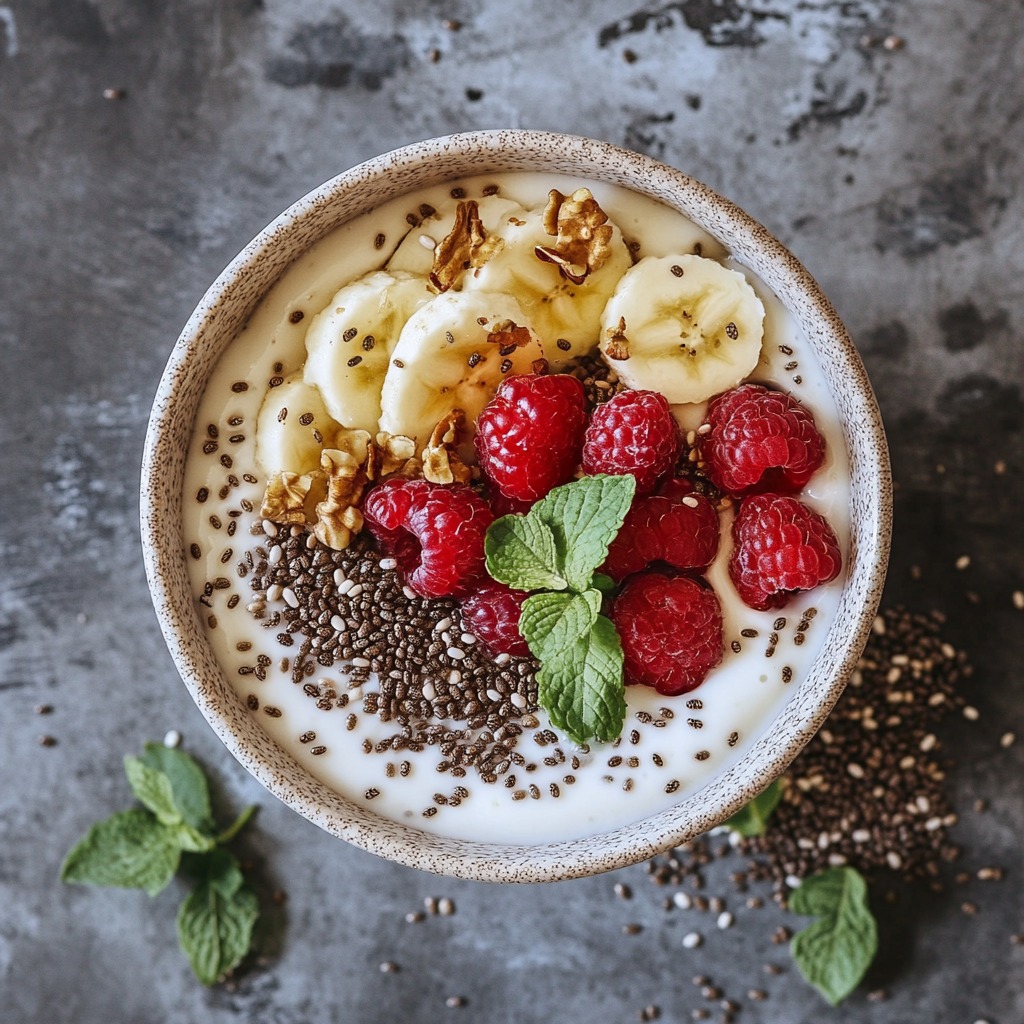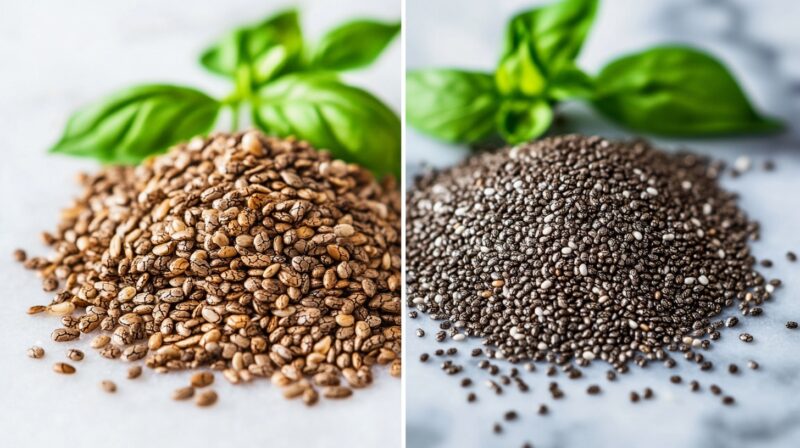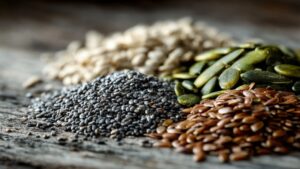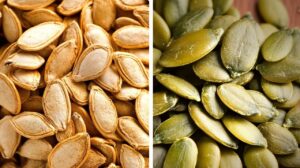Basil seeds and chia seeds often take center stage when discussing superfoods due to their impressive nutritional profiles and culinary versatility.
Both have earned their place in health-conscious diets, offering a range of benefits for physical well-being and meal enhancement.
Despite their similarities, the differences between these seeds make them suitable for varied dietary goals and preferences.
1. Where Do They Come From?
Chia seeds have a rich history rooted in ancient Mayan and Aztec civilizations, where they were essential to their diets.
Native to Central America, particularly regions of Mexico and Guatemala, these were prized for their ability to boost energy and sustain endurance.
Harvested from Salvia hispanica, a member of the mint family, chia symbolizes strength, a trait reflected in their historical usage.
Basil, on the other hand, hails from tropical regions of Southeast Asia and Central Africa. Extracted from Ocimum basilicum, or sweet basil, these, commonly known as Sabja seeds, have long been used in traditional dishes and remedies.
Like chia seeds, they belong to the mint family, explaining their visual similarity, but their culinary history is more regional.
2. How Basil Seeds and Chia Seeds Look

Basil seeds and chia seeds can be differentiated easily based on their physical attributes.
- Shape: Tiny and oval.
- Color: A mix of black, gray, brown, and white.
- Texture: Smooth and slightly glossy.
- Size: Larger than basil seeds.
Basil (Sabja Seeds):
- Shape: Elliptical, resembling rice grains.
- Color: Uniformly black.
- Texture: Matte and less shiny.
- Size: Smaller than chia.
When soaked, both seeds transform into gel-like forms. Chia develop a soft, chewy consistency, while basil becomes translucent with a visible black core.
3. How Basil Seeds and Chia seeds Are Eaten
Basil and chia seeds are versatile additions to a variety of dishes, but they differ in how they are prepared and consumed.
Both are commonly soaked in water before consumption. Soaking allows the seeds to expand, forming a gel-like texture that is not only easier to consume but also beneficial for hydration and digestion.
- Smoothies
- Desserts
- Drinks
Chia, however, offers the advantage of being consumable in their raw form. Raw chia can be sprinkled on top of salads, yogurt, oatmeal, or baked goods, making them an easy choice for on-the-go meals.
Despite this, it is often recommended to soak chia as the hydration process can aid in digestion and nutrient absorption.
In contrast, basil is harder and more difficult to chew in its raw form, making soaking a necessary step. When soaked, basil swells quickly, usually within 20 minutes, transforming into a soft, jelly-like consistency that is pleasant to eat.
That makes them particularly popular in beverages like falooda or infused water, where their rapid swelling time is a significant advantage.
Chia seeds, on the other hand, require a longer soaking period, typically 30 to 40 minutes, to achieve a similar gelatinous texture.
4. What’s In There For Your Taste Buds

When it comes to flavor, basil, often referred to as sabja, offers a subtle yet distinct profile.
These carry a mild essence reminiscent of the herb basil, which many associate with its aromatic and delightful culinary charm.
If derived from Thai basil plants, they even present a slightly sweet undertone, adding a gentle sweetness that can enhance desserts or beverages.
However, because their flavor is mild, it’s important to pair them thoughtfully with foods or drinks that complement their delicate taste, ensuring the overall dish is well-balanced.
Chia seeds, in contrast, are nearly flavorless. The neutral taste makes them highly versatile, as they can seamlessly blend into a variety of dishes and beverages without altering the original flavor.
The quality makes them an ideal choice for those who prefer not to introduce additional tastes to their meals while still reaping the nutritional benefits of these tiny powerhouses.
5. How Basil and Chia Seeds Enrich Your Food & Drinks
Chia and basil seeds are incredibly versatile ingredients that can elevate your meals and beverages while offering numerous health benefits.
Chia seeds have a remarkable ability to absorb water up to ten times their weight, forming a gel-like consistency.
That makes them an excellent plant-based alternative to eggs in baking, ideal for those following vegan or egg-free diets.
Their neutral flavor allows them to be used raw as a topping for salads, smoothies, or oatmeal.
One of the most popular uses of chia is in chia pudding, a simple and nutritious dish.
To prepare it, soak chia seeds overnight in plant-based milk like almond or oat milk.
By morning, you’ll have a creamy, ready-to-eat breakfast. Add honey, fruits, or a sprinkle of coconut sugar for sweetness and a burst of flavor.
Since chia are naturally bland, they easily adapt to a variety of recipes and pair well with both sweet and savory ingredients. Basil, on the other hand, is slightly less flexible due to their mild flavor but still has a range of culinary applications.
They are commonly used in traditional recipes like Falooda, lemonade, and porridge. Basil seed puddings, much like chia pudding, can be a delightful treat.
6. What’s Inside Basil Seeds and Chia Seeds

Now that you’ve discovered how basil and chia seeds can be integrated into your meals and beverages, it’s time to go into their nutritional profiles.
Understanding what these seeds offer can help you make informed decisions about which fits best with your health goals.
A single tablespoon of basil and chia seeds provides distinct benefits. Chia stands out with their higher omega-3 fatty acid content, making them a valuable addition to diets emphasizing heart health and inflammation reduction.
Their lower carbohydrate content makes them an excellent option for those following a ketogenic diet, as they provide energy without spiking blood sugar levels.
On the other hand, basil excels in fiber content, which plays a crucial role in supporting digestion and curbing appetite.
Their lower fat content also adds to their appeal to individuals looking for lighter dietary options.
7. Health Benefits
Basil and chia seeds are nutritional powerhouses, each offering a range of health benefits that cater to various dietary needs.
While they share some overlapping advantages, they also have distinct properties that set them apart in promoting overall well-being.
The Heart’s Ally and Gut Support
Basil seeds are well-known for their anti-inflammatory properties, which contribute to maintaining heart health by reducing inflammation and lowering the risk of cardiovascular diseases.
Their ability to regulate blood sugar levels makes them particularly effective in managing diabetes and reducing obesity-related risks.
The high fiber content in basil seeds not only supports gut health by enhancing digestion but also improves cholesterol levels.
By keeping you fuller for longer, these help curb unhealthy cravings, making them a great addition to weight management plans.
Furthermore, the presence of alpha-linolenic acid in basil aids in boosting the body’s fat-burning processes, offering an additional edge in weight loss efforts.
A Source of Omega-3s and Long-lasting Energy
Chia seeds stand out for their high omega-3 fatty acid content, which plays a vital role in energy production and reducing inflammation.
These essential fats are also associated with improved brain and heart health.
Chia seeds are an excellent choice for those aiming to lose weight, as their rich fiber and protein content promote satiety, helping you feel full for extended periods.
Additionally, they assist in reducing liver fat, which is beneficial for overall metabolic health.
Research highlights their potential in managing diabetes by stabilizing blood sugar levels and improving insulin sensitivity.

8. Pricing Comparison
- Accessibility
- Quality
- Market dynamics
Availability and Accessibility
Chia are widely accessible both online and in physical stores, making them relatively easy to procure.
In contrast, basil is less commonly found, which can make sourcing them more challenging.
Pricing Based on Quality
The cost of both chia and basil seeds varies depending on quality, particularly whether they are organically produced. Here’s a breakdown of their pricing:
High-quality organic chia are typically priced between $1.00 and $2.50 per pound. For instance, a 10-pound bag of premium bulk chia seeds is available for approximately $35.99, equating to about $0.22 per ounce.
Pricing information for basil is less readily available, reflecting their limited accessibility. However, some sources indicate that fresh basil can range from $2.50 to $10.00 per kilogram, depending on various factors.
So, Who Wins In The Game?
If versatility is your priority, chia seeds are the go-to option, as they effortlessly blend with most foods and drinks. On the other hand, if you prefer a hint of flavor, basil might be the better choice.
For convenience and affordability, Chia takes the lead due to its widespread availability and lower cost. However, if you’re looking for quick hydration and time-saving preparation, basil shines with its rapid water absorption.
But why choose one when you can enjoy the best of both? Incorporating both into your diet allows you to maximize their unique therapeutic and health benefits.




